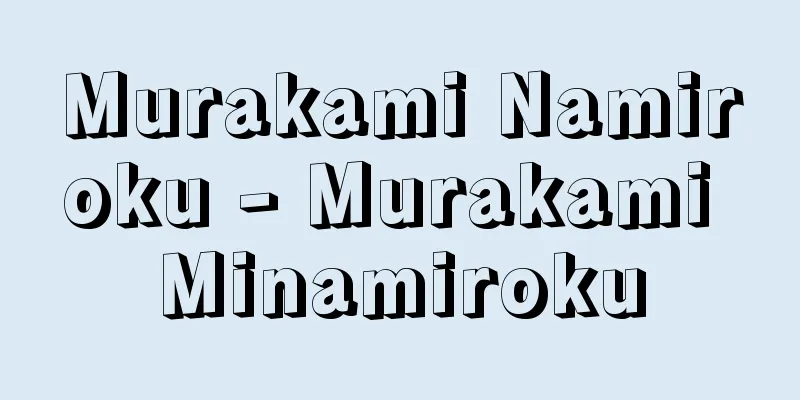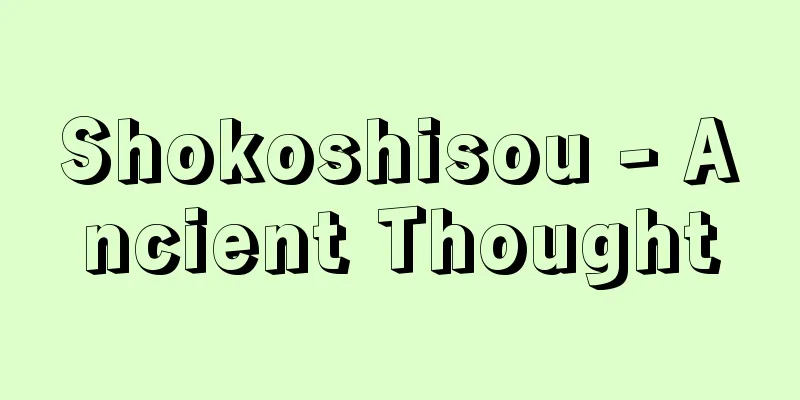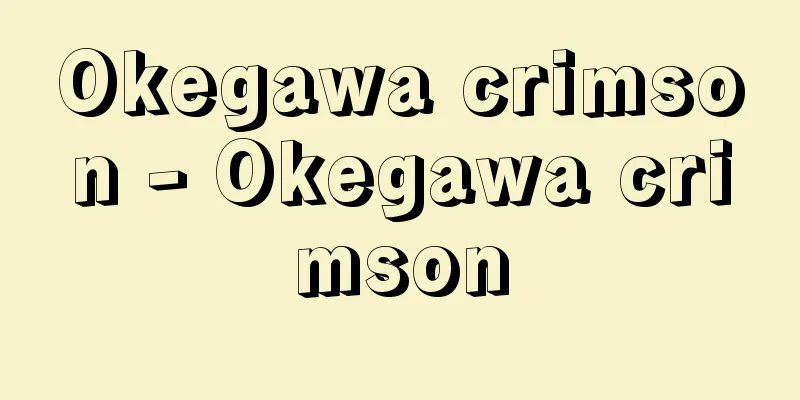Special Kana Spelling in the Ancient Period

|
Japanese texts from the 7th and 8th centuries contain kana usages that are not found in later times, and these are based on differences in pronunciation. The Man'yōgana kikekosotonohimemoyoro and its voiced consonants gigegozodobibe can each be classified into two groups (named by Shinkichi Hashimoto as class A and class B), and the groups are not mixed. For example, 美 and 弥 are used to represent the mi in mi (three), miru (see), and kami (upper, hair), while 未, 微, and 尾 are used to represent the mi in mi (body), miru (circle), and kami (god) (the former are called the class A of mi, and the latter the class B of mi). Based on research into the pronunciation of Chinese characters, this distinction between the two types is recognized as a reflection of the fact that the phonological structure of Japanese at that time was different from that of later generations. There are various theories about what kind of differences there were in pronunciation, and there is no consensus on the interpretation of the vowel system. The Kojiki has a distinction between the two types of mo, which is not found in other documents, and there are also traces of a distinction between ho and bo, so in the O row, the distinction between the two types is recognized in almost every line, and the prevailing theory is that there were two vowels, such as [o], which is close to the current sound, and [ö], a central vowel. In the I and E rows, the distinction between the two types is only seen in the limited lines of kagahabama, so the theory that assumes the existence of two types of vowels as in the O row (there are many theories that the Ko group is a single vowel close to the current sound, and the O group is a diphthong or central vowel) is somewhat unconvincing, and there is also a theory that the difference is due to palatalization and non-palatalization of consonants. This distinction in the use of Man'yōgana became gradually unclear in the Kinai region after the second half of the 8th century, and was almost completely lost by the 9th century. In the eastern dialects conveyed in the Azuma-uta and Sakimori-uta in the Manyoshu, there is considerable confusion between the two types. This linguistic phenomenon was first pointed out by Motoori Norinaga, and Ishizuka Tatsumaro investigated it in more detail, writing in his book "Kanazukai Okunoyamamichi" that there is a clear distinction between the two types. This book was passed down as a copy, and Hashimoto Shinkichi rediscovered it through his own research, corrected this theory, and published it, clarifying that the difference in writing is not simply due to kana spelling, but due to differences in phonology. This discovery also extended to grammar and vocabulary, and for example, it was discovered that the pronunciations of the past imperfect form "goe" and the imperative form "goe," and the words "kami" and "kami" in the 4th conjugation of verbs were different, which made a great advance in the study of ancient Japanese. Hashimoto Shinkichi also included the distinction between the two types of e, but this is a distinction between the a-row and ya-row, which is different in nature from the one mentioned above. [Takuya Okimori] "Studies on Characters and Kana Usage" (The Collected Works of Dr. Shinkichi Hashimoto, Volume 3, 1949, Iwanami Shoten) "Studies on the Phonology of the Japanese Language" (The Collected Works of Dr. Shinkichi Hashimoto, Volume 4, 1959, Iwanami Shoten) "Studies on Ancient Kana Usage by Susumu Ohno (1953, Iwanami Shoten)" [Reference] |Source: Shogakukan Encyclopedia Nipponica About Encyclopedia Nipponica Information | Legend |
|
7、8世紀の日本語文献には、後世にない仮名の使い分けがあり、それは発音の違いに基づくというもの。キケコソトノヒヘミメモヨロおよびその濁音ギゲゴゾドビベの万葉仮名は、それぞれ二つのグループ(橋本進吉の命名により甲類、乙類とよんでいる)に分類でき、グループ間で混用されることがない。たとえば、美、弥などはミ(三)、ミル(見)、カミ(上、髪)などのミを表すのに用い、未、微、尾などはミ(身)、ミル(廻)、カミ(神)などのミを表すのに用いている(前者をミの甲類、後者をミの乙類という)。 このような2類の区別は、漢字音の研究などにより、当時の日本語の音韻組織が後世とは異なっていた事実の反映と認められる。発音上どのような差異があったのかという点では諸説があり、母音体系の解釈についても定説がない。『古事記』には他の文献にはないモの2類の区別があり、ホとボにも区別した痕跡(こんせき)がうかがわれることから、オ段に関してはほぼ各行に2類の区別が認められることとなり、現在の音に近い[o]と、中舌母音の[ö]のような2種の母音が存在したと推定する説が有力である。イ段、エ段ではカガハバマという偏った行にしか2類の使い分けがないことから、オ段と同様に2種の母音の存在を想定する説(甲類は現在の音に近い単母音、乙類は二重母音または中舌母音とする説が多い)には、やや説得力に欠ける点があり、子音の口蓋(こうがい)化と非口蓋化による差異とする説も唱えられている。このような万葉仮名の使い分けは、畿内(きない)では8世紀後半以降しだいにあいまいになり、9世紀にはほとんど失われてしまった。『万葉集』の東歌(あずまうた)、防人歌(さきもりうた)の伝える東国方言では、かなり多く2類の混同がみえる。 この言語事象の指摘は、本居宣長(もとおりのりなが)に始まり、石塚龍麿(たつまろ)がさらに詳しく調査し、2類の間に画然とした区別のあることを『仮名遣奥山路(かなづかいおくのやまみち)』に著した。この書は写本として伝わり、橋本進吉が独自の研究で再発見して、この説に訂正を加えて紹介公表するとともに、単なる仮名遣いではなく、音韻の差異による書き分けであることを明らかにした。この発見は文法や語彙(ごい)にも及び、たとえば、動詞四段活用の已然(いぜん)形「行け」と命令形「行け」、「上(かみ)」と「神(かみ)」はそれぞれ発音が違っていたことが知られ、上代日本語の研究は飛躍的に進歩した。なお、橋本進吉はエの2類の区別も含めたが、これはア行とヤ行の区別であって、前述のものとは性質を異にする。 [沖森卓也] 『『文字及び仮名遣の研究』(『橋本進吉博士著作集 第3冊』1949・岩波書店)』▽『『国語音韻の研究』(『橋本進吉博士著作集 第4冊』1959・岩波書店)』▽『大野晋著『上代仮名遣の研究』(1953・岩波書店)』 [参照項目] |出典 小学館 日本大百科全書(ニッポニカ)日本大百科全書(ニッポニカ)について 情報 | 凡例 |
Recommend
concept
...As is clear from the fact that the etymology o...
Political system
A theoretical model that treats political phenomen...
Dmitrievsk
…Together with the nearby Donetsk, it is the core...
Kikuchi Yosai
A painter from the late Edo period to the early M...
Aesop (English spelling)
[raw]? [died] c. 564 BC. A legendary Greek fable w...
Nakatsu [village] - Nakatsu
A village in Hidaka County, central Wakayama Prefe...
Orenhauer, E.
… [Masao Nishikawa] [Postwar] After the defeat of...
Begging monk - Ganninbouzu
A street performer in the guise of a monk. A dais...
Gifford, EW
…Edward Sapir linked the bipartite naming system ...
Coastal iron sand
…Iron minerals, which make up 1-2% of igneous roc...
Ikkeisai Yoshiiku - Ikkeisai Yoshiiku
… [Edo Rakugo in the late Edo period] The Edo Rak...
Acute Hepatitis
◎ There are no subjective symptoms, and you only n...
Richard von Krafft‐Ebing
1840‐1902 German psychiatrist. Born in Mannheim, h...
Ogura Shrine
Year of death: Kakitsu 3 (1443) Year of birth: Yea...
Cooperative games
In a game, players are able to make decisions bas...









